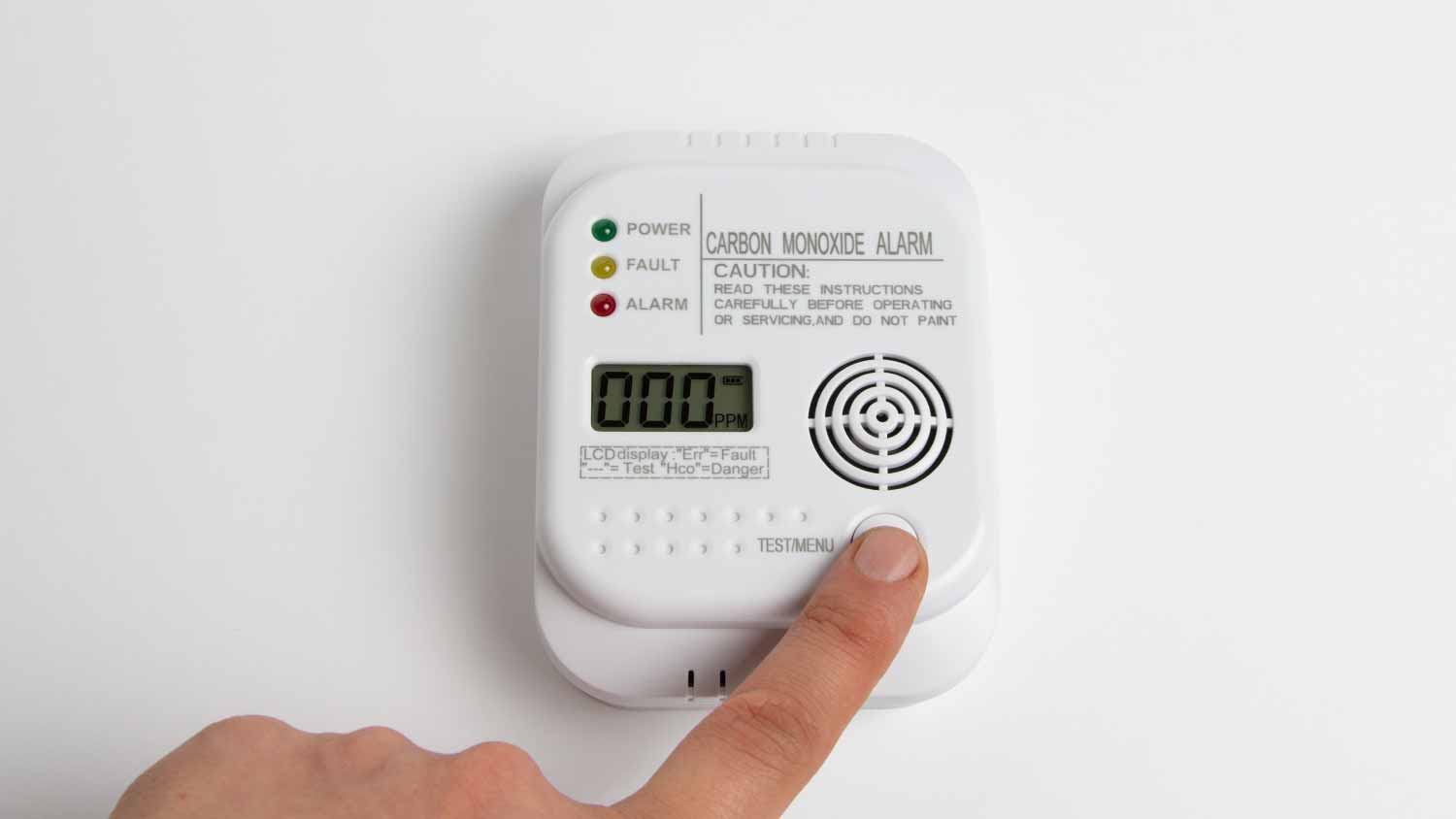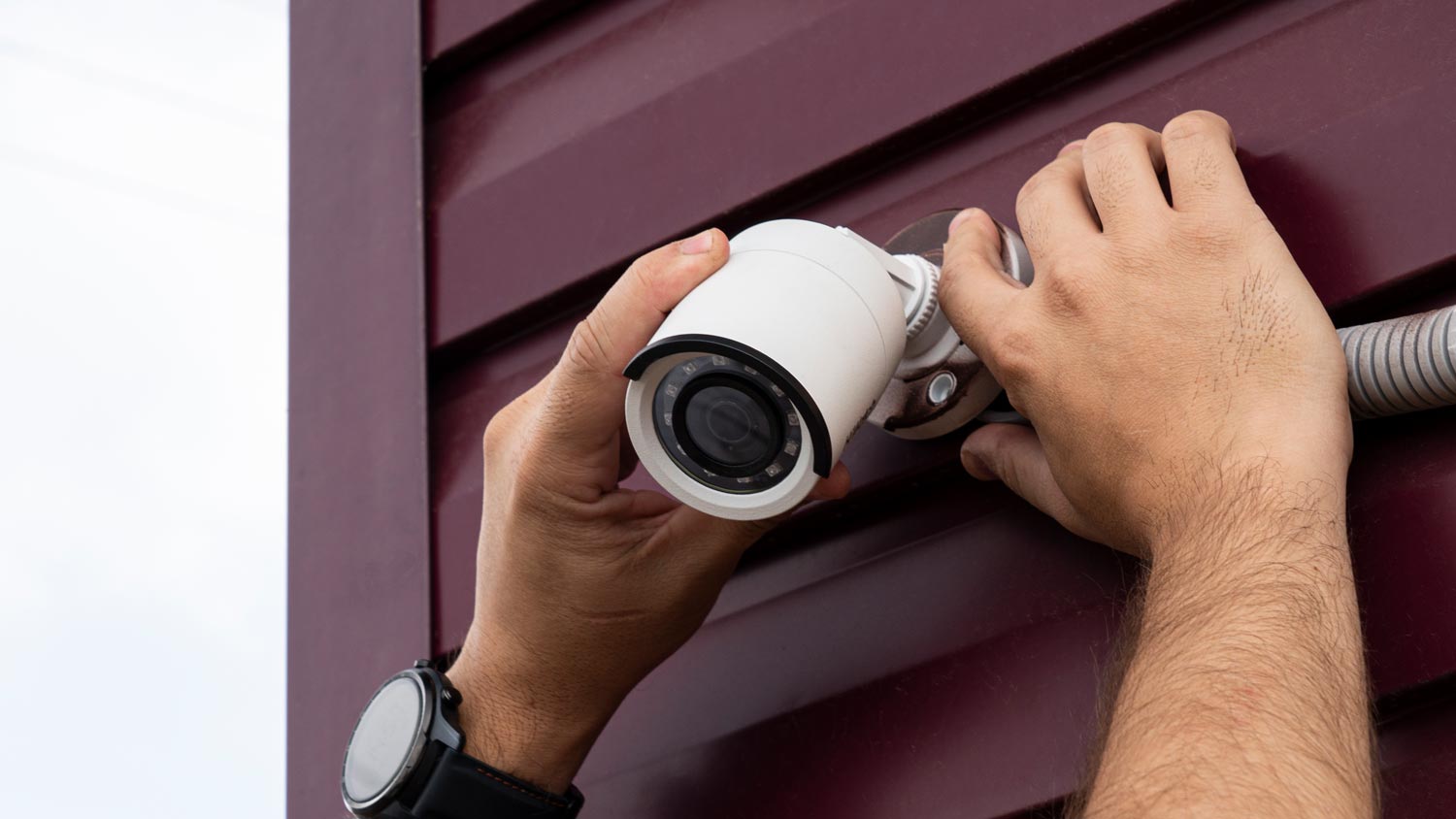How to Install a Wall Safe
A wall safe can provide peace of mind and a place to stash your valuables


- Stud finder
- Level
- Drywall saw
- Pencil
- Power drill
- Wall safe
- Mounting hardware
- Shims
- Thumb tacks (optional)
Looking for a way to keep documents and valuables safe and organized? A wall safe can keep your items tucked away and safe in the event of fire or flooding. Similar to projects like changing your locks or installing basement window bars, installing a wall safe is a relatively easy project that can help you feel safer in your home.
With the right tools and wall safe to fit your needs, this installation should only take an afternoon but can be invaluable in the long term. This guide walks you through how to install a wall safe in your home.
Find the Right Location for Your Safe
 Photo: MILATAS / MILATAS / Getty Images
Photo: MILATAS / MILATAS / Getty ImagesBefore you start installing the wall safe, it’s important to find the right location for it. You’ll want to install your wall safe somewhere in your home off the beaten path, like a closet or bedroom.
Once you have a general location for your safe, try to avoid installing it anywhere near plumbing or electrical work in the wall. Out of an abundance of caution, turn off the breaker before cutting into any drywall, even if you don’t think it's close to wiring.
Find the Studs
 Photo: Alex Ratson / Moment / Getty Images
Photo: Alex Ratson / Moment / Getty ImagesUse a stud finder to find an exact placing for your safe. Most standard wall safes are 16 inches wide, making them a perfect fit between your wall studs, which are placed 16 inches apart.
Once you find the studs, mark them on the wall with a pencil.
Mark the Safe
 Photo: Jason Homa / Tetra images / Getty Images
Photo: Jason Homa / Tetra images / Getty ImagesWith studs located, draw out the dimensions of the safe on the wall between the markings. This is where you’ll cut and install the safe.
Use a tape measure to find the exact distances and draw the outline. Double-check these lines are level using a level.
Note: Some wall safes will come with a template you can use to mark the wall instead of free measuring. In that case, line the template up with the marked studs and thumbtack the corners of the template onto the wall. Remote the thumbtacks and template, then draw straight lines between the pinholes.
Cut the Drywall
 Photo: photovs / iStock / Getty Images Plus / Getty Images
Photo: photovs / iStock / Getty Images Plus / Getty ImagesCarefully following the lines, gently saw through the drywall using the drywall knife. If you meet resistance, double-check that you are not sawing into wires or plumbing. If you do, consider installing the wall safe somewhere else.
When you cut all four sides of the safe markings, the square piece of drywall should pop out, leaving you with a cavity approximately the size of the wall safe.
Fit the Safe
Gently place the wall safe into the hole, noting if it is level and fits snuggly into the wall. If the safe is not level or doesn’t fit tightly, consider using shims to level it out.
Use the power drill to install the shims on the sides of the studs to even out the hole for a better fit, if necessary.
Install the Safe With Mounting Hardware
 Photo: etienne voss / iStock / Getty Images Plus / Getty Images
Photo: etienne voss / iStock / Getty Images Plus / Getty ImagesYour wall safe should include mounting hardware. Using the power drill and screws included, mount the wall safe by drilling the screws into the interior side walls of the safe into the studs. Ensure each screw is tight and secure in the studs to prevent a thief from yanking the safe out of the wall.
With your safe safely installed, it’s time to add the shelves (included with the safe) and store your valuables. Remember, a safe only serves its purpose if you actively use it.
Tips for Buying a Wall Safe
There are many different types of safes you can install for in your home, all with their own buying guides and classifications.
When browsing for a wall safe, you’ll notice most come with two classifications: burglar-resistant and fire-resistant. Two testing bodies, Underwriter Laboratories (UL) and Safe Manufacturers National Association (SMNA), test safes to ensure they can withstand fire and tampering.
When shopping for a safe, it’s important to purchase one that has been tested and rated by one of the above organizations to ensure it can hold up to fire and burglary.
Here’s how to read both ratings to decide which safe best meets your needs.
Burglar Resistant
The burglary-resistant ratings explain how long a thief would take to break into the safe using tools, heat, or even explosives. Typically, the higher the resistance, the more expensive the safe.
TL-15: 15 minutes TL1-5X6: 15 minutes, on all sides of the safe TL-30: 30 minutes TL-30X6: 30 minutes, on all sides of the safe TRTL-15X6: 15 minutes (including torches) TRTL-30: 30 minutes (including torches) TRTL-30X6: 30 minutes on all sides (including torches) TRTL-60: 60 minutes (including torches) TXTL-60: 60 minutes (including torches and small explosives)
Fire Resistant
Fire resistance explains how long the safe will hold up when exposed to high heat. Once again, the higher the rating, the higher the price tag.
UL Classification, SMNA Classification, and Fire Resistance:
A: F-ID Safe: 4 hours in fire at 2,000 degrees Fahrenheit B: F-ID Safe: 2 hours in a fire at 1,850 degrees Fahrenheit C: F-ID Safe: 1 hour in a fire at 1,700 degrees Fahrenheit














